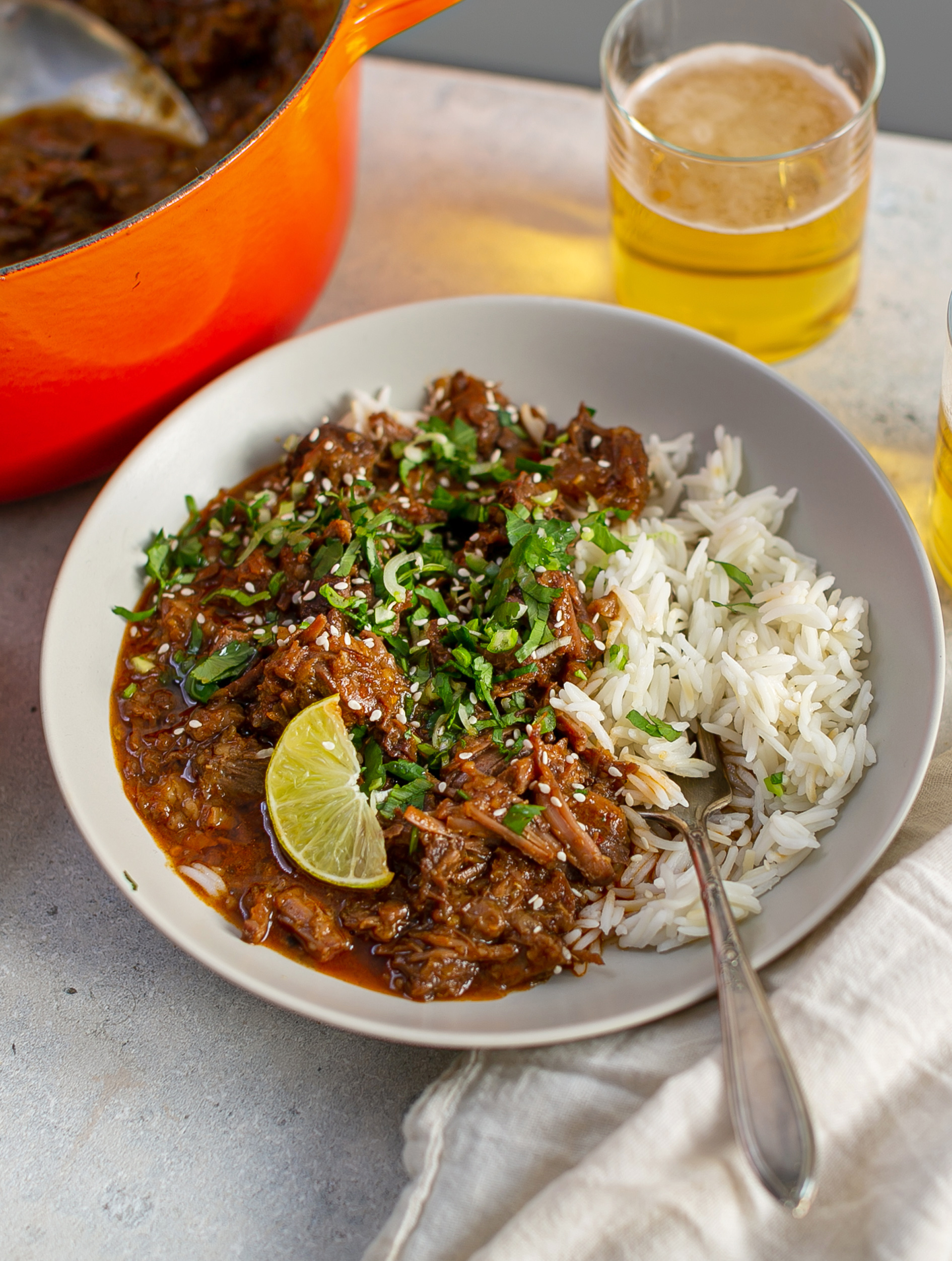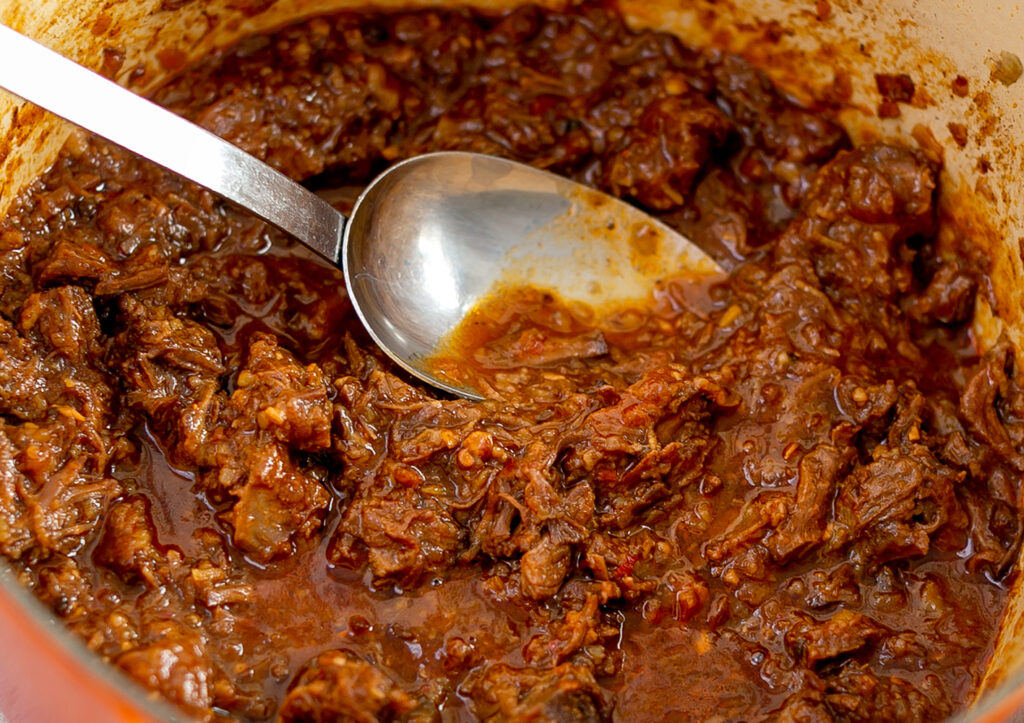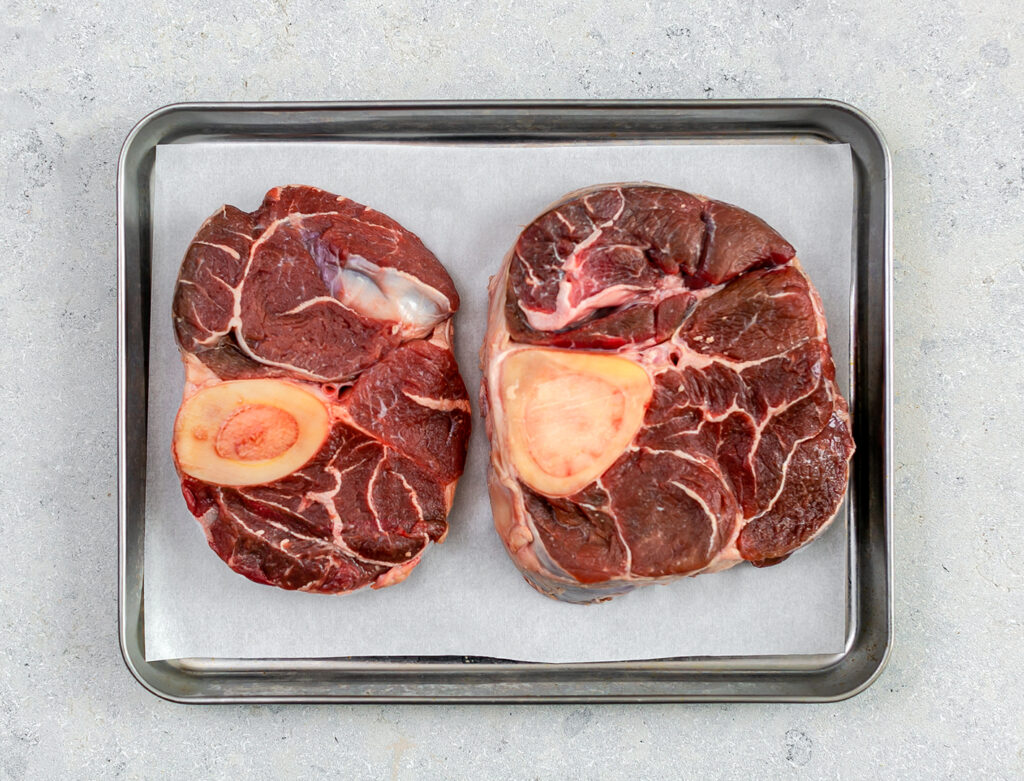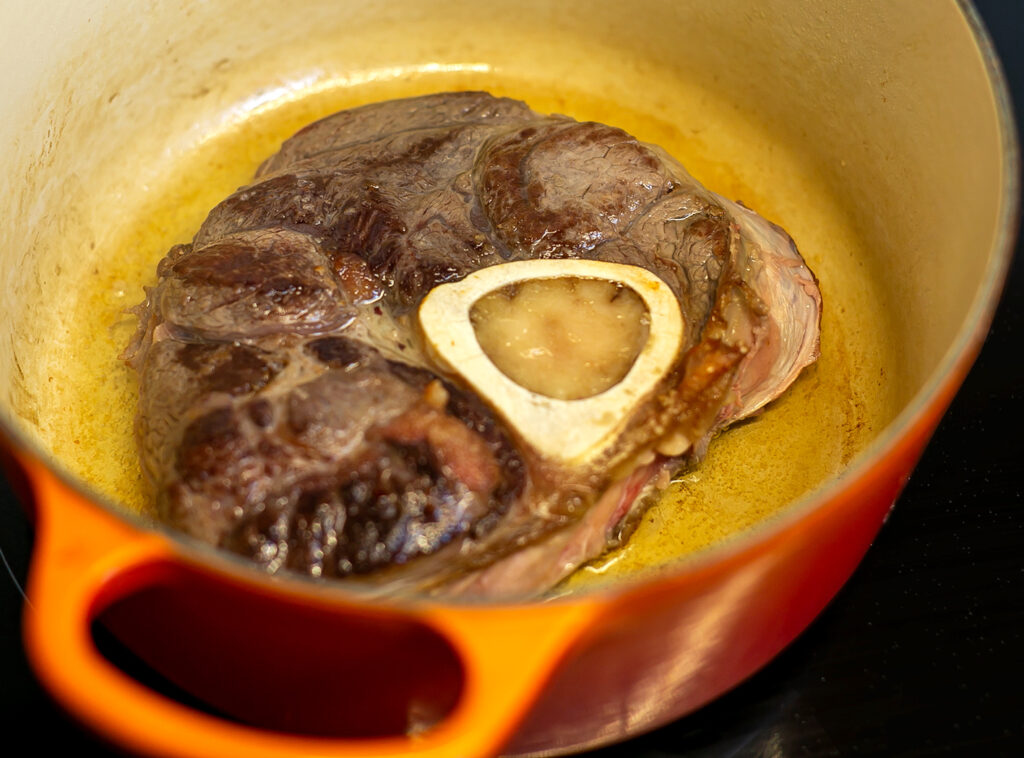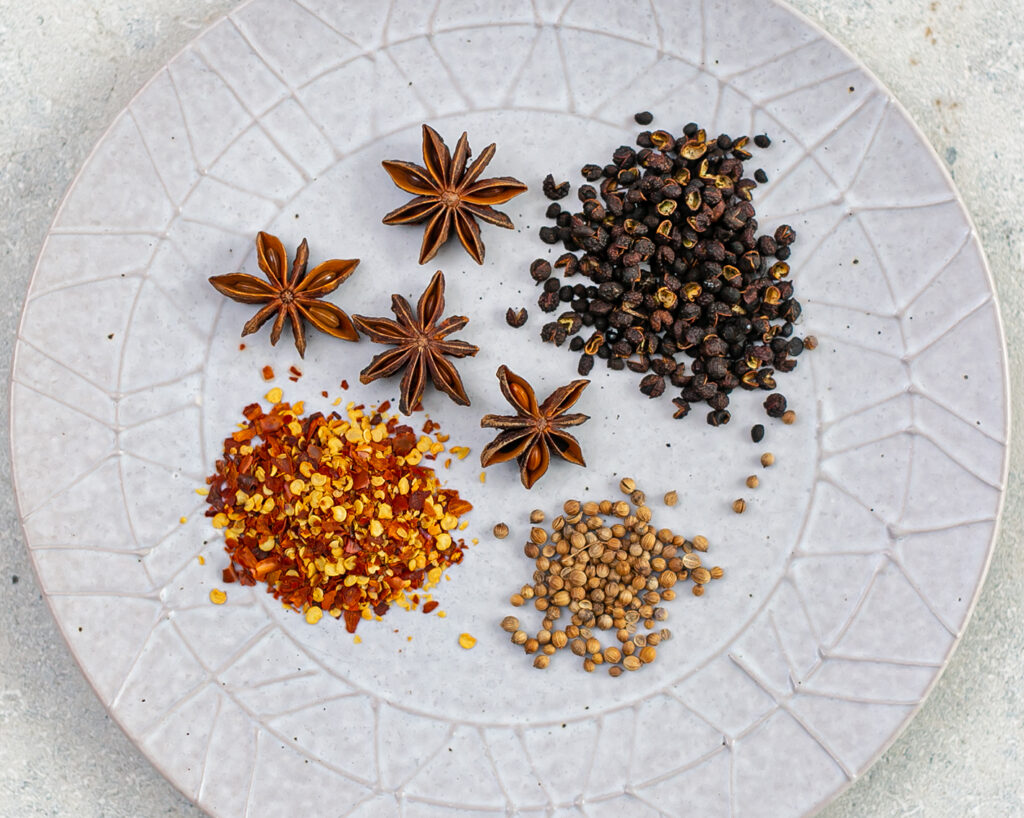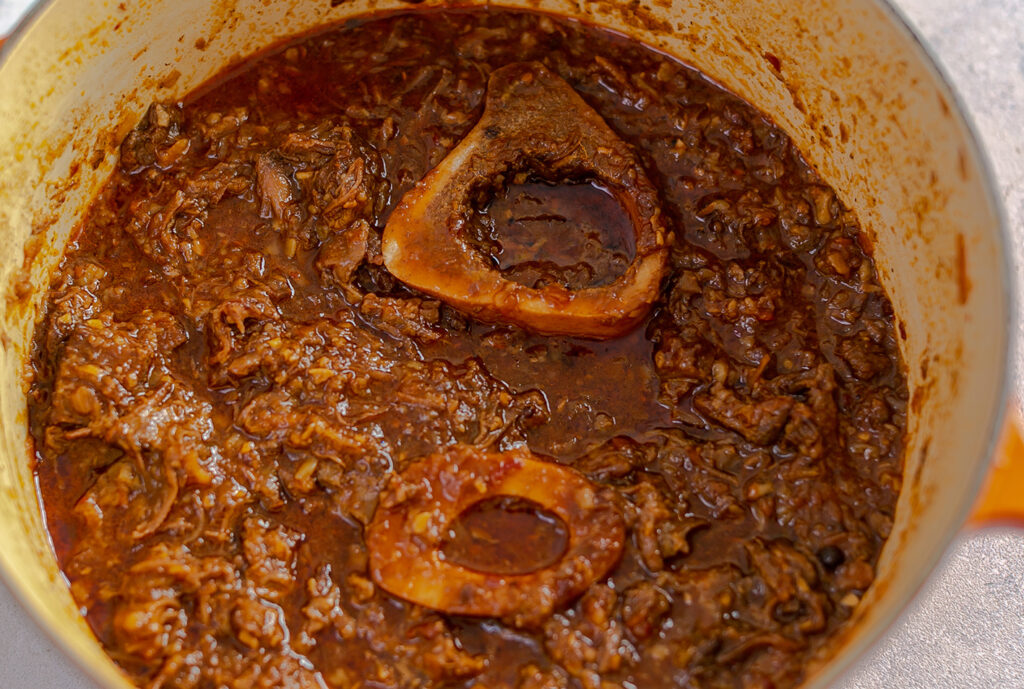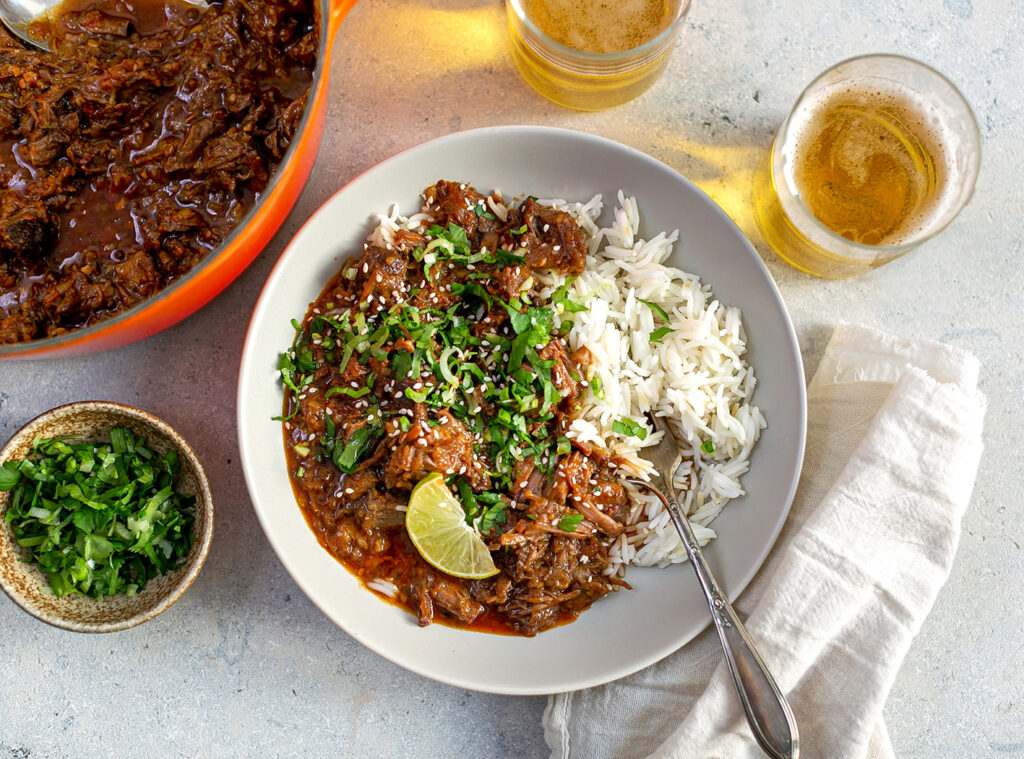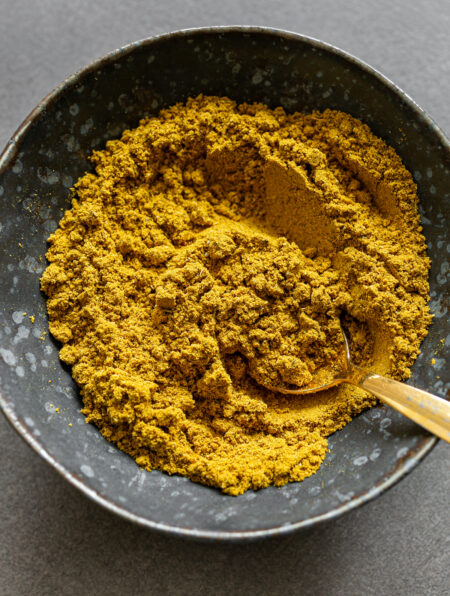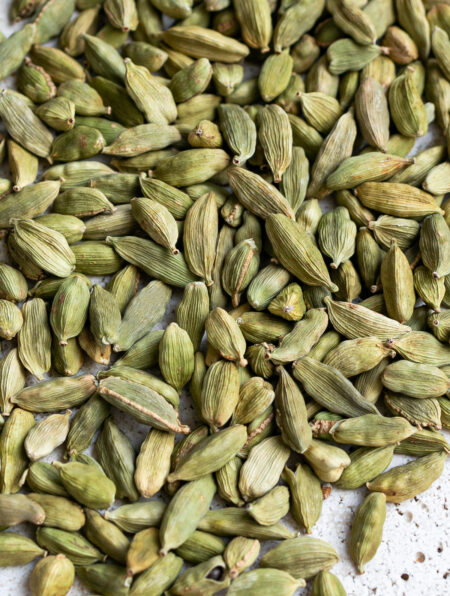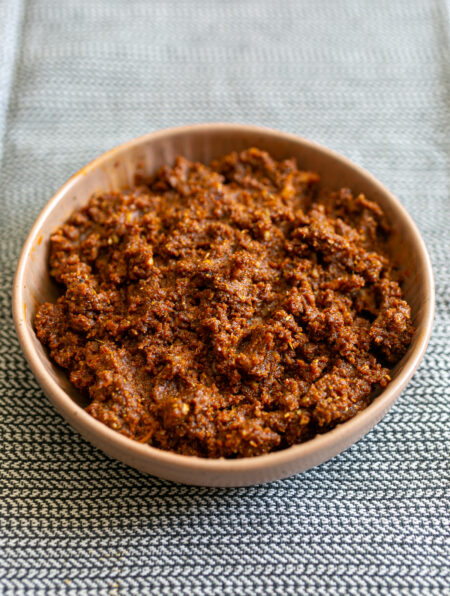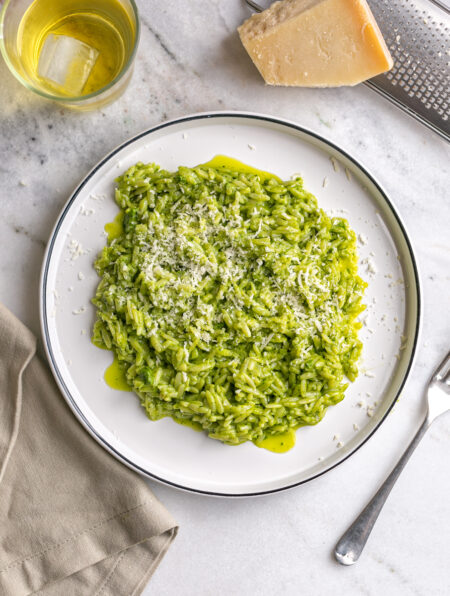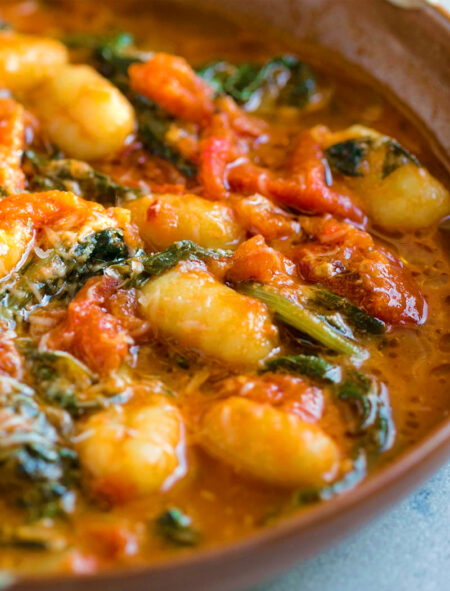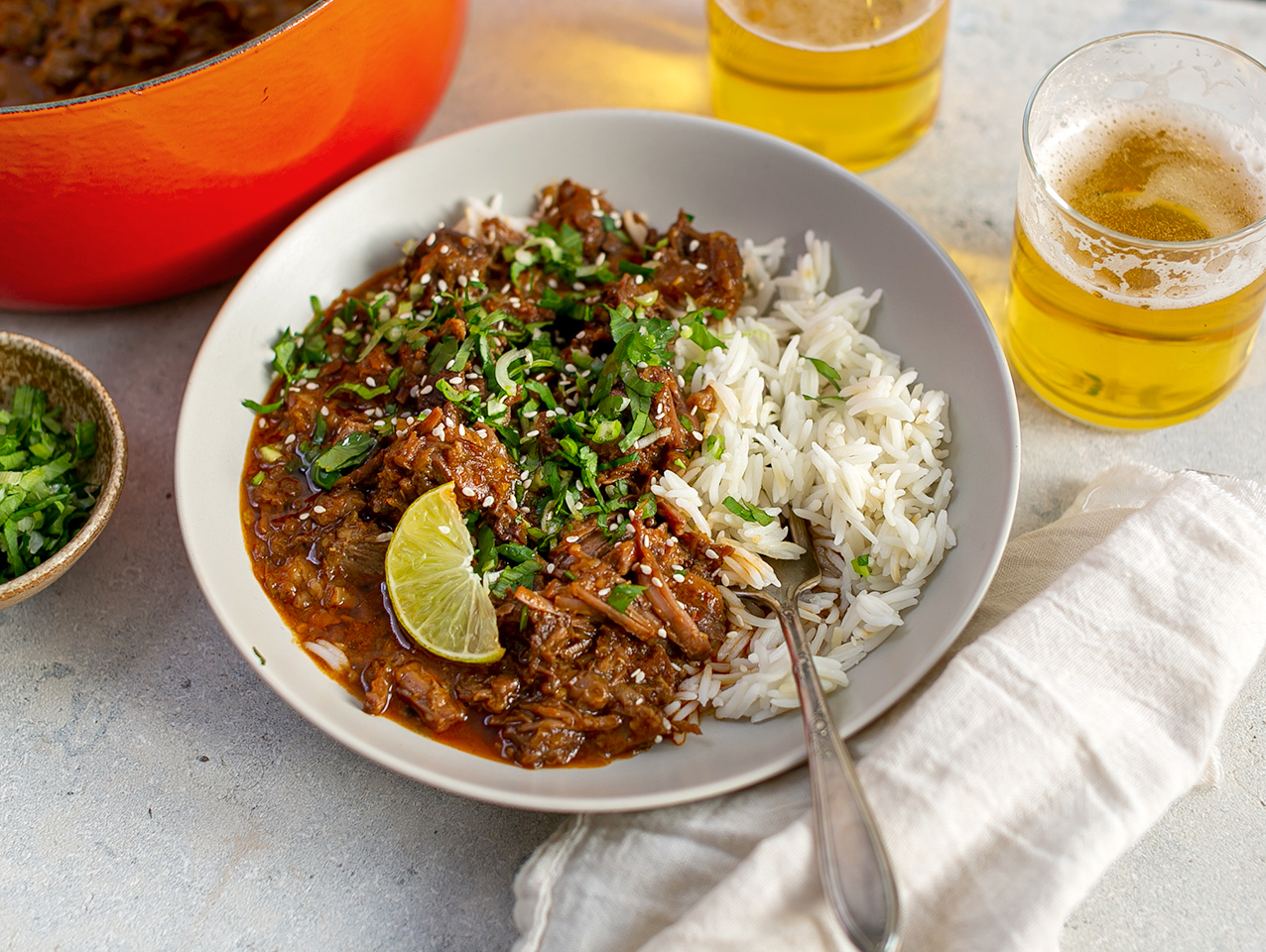 Fragrant Beef Gochujang Stew, slow-cooked to perfection resulting in a rich juicy meat sauce with a spicy kick
Fragrant Beef Gochujang Stew, slow-cooked to perfection resulting in a rich juicy meat sauce with a spicy kick
Bone-in beef shanks are naturally tough, dry, and sinewy and require hours of slow-cooking to reduce the flesh to soft juicy moist meat, but it’s very much worth the effort.
The added bonus comes from the marrow inside the bone, holding the meat together. After some time the marrow deliciously melts into the sauce and enhances it with a rich meaty-buttery-beef flavour.
Spices of Sichuan pepper, coriander, ginger and Korean gochujang chilli paste create a wonderful multi-layered base, producing a taste that has a warm comforting feeling.
Beef Shanks with bone marrow
After many hours of slow-cooking, you will see the meat effortlessly fall off the bone. When raw, marrow looks almost like part of the bone, hiding in the middle. Once it’s cooked, it becomes soft and rich, melts easily away and tastes like a sort of beef butter. It’s a wonderful enhancement and adds a rich luxurious taste to the stew.
Browning meat before adding it to the stew
Beef should always be salted and browned on a high heat before adding to a stew. Browning helps develop depth of flavor through the Maillard reaction where proteins and carbohydrates react together to create more complex flavour compounds and release juices.
The browning should only take a few minutes, flash-frying in hot oil on each side and making sure the meat does not cook through. If you over-brown the meat will become dry and continue to get drier as it slowly cooks. Timing is everything!
Spices
Gochujang (Korean fermented red chili pepper paste) is spicy, savory, slightly sweet, and salty. It adds lots of deep robust flavour and pairs very well with beef and potato.
Sichuan peppercorns are an essential ingredient in Chinese Sichuan cooking and are known for their unique mouth-numbing quality. They have a floral taste and add a lovely sharpness to cut through the savory-sweetness of Gochujang paste.
Star anise lays the foundation of flavour in this stew with a licorice-like aroma. Along with Sichuan peppers, it’s one of the main spices in the Chinese 5 spice mix and works harmoniously with coriander seeds as well.
Juicy tender meat with a bone marrow infused sauce
Use two forks to help shred the soft meat into smaller pieces. The bones should be empty of marrow now and have spread into the sauce. The bones can now be removed and discarded.
How to Eat Beef Gochujang Stew
Serve with rice or noodles and garnish with lime slices. The spring onion coriander garnish adds the final touch of freshness and bright green flavour which is much needed for balance. Enjoy this hearty stew on a chilly evening or Sunday afternoon with a cold beer.
PrintBeef Gochujang Stew
Fragrant Beef Gochujang Stew, slow-cooked to perfection resulting in a rich juicy meat sauce with a spicy kick
- Total Time: 3 hours, 30 minutes
- Yield: 4 1x
- Category: Beef
- Cuisine: Korean Stew
Ingredients
- 1.2 kilos beef shank
- 1 onion, chopped fine
- 1 celery, chopped fine
- 1 carrot, grated with a box grater
- 4 garlic cloves, minced
- 1 potato, peeled and grated with a box grater
- Large knob ginger
- 1 tbsp apple vinegar
- 4 star anise
- 1 Tbsp Sichuan peppercorns, ground down
- 1 tsp coriander seeds
- 1 tsp red chilli flakes
- 2 Tbsp gochujang paste
- 1 tbsp honey
- 1 tbsp soy
- 3 cups beef stock
- Rice for serving
- Sesame seeds for garnish (optional)
Garnish
- 2 spring onions
- Small bunch coriander
- 1 tbsp lime juice
Instructions
- Using a frying pan with no oil, quickly dry roast spices until fragrant, approx 1 minute. Remove and grind down to a powder.
- Season beef with salt. In a large pot, heat vegetable oil until smoking. Add beef shanks to the hot pan and brown all sides, about 3 minutes per side. Remove browned shanks and set aside.
- Using the same pan, fry onion, celery, carrot, and garlic until soft.
- Add another splash of oil to the pan along with the spice mix. Cook a few minutes until fragrant, stirring around so spices don’t stick or burn.
- Next, add gochujang paste. Cook for 1 minute.
- Add stock, honey, soy, apple cider vinegar and grated potato to the pot, and combine well. Now place the beef shanks into the sauce, bring to a boil, place a lid on top, and simmer for 3 hours.
- Cook rice or noodles according to packet instructions.
- Coriander garnish: Combine spring onions, coriander, lime in a small bowl.
- The meat should have fallen off the bone by now. To divide into small pieces use two forks to shred. Make sure all the bone marrow has melted away from inside the bones and into the sauce. If not use a knife to remove it and stir through. Discard bones.
- Serve Beef stew on top of rice or mix into noodles. Squeeze over lime and garnish with coriander and spring onion. Sprinkle with sesame seeds if you have them.
Keywords: Beef Gochujang Stew, Gochujang Stew, Korean Stew, Korean beef Jjigae, Korean Jjigae, lime and coriander oil, What is gochujang used for

